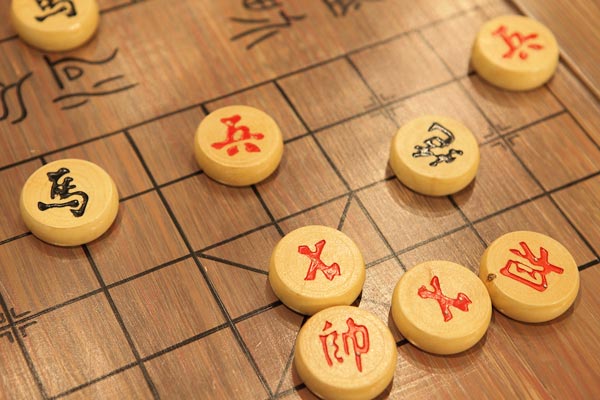Yixing purple sand pottery making skills, local folk traditional pottery making skills in Dingshu Town, Yixing City, Jiangsu Province, China, one of the national intangible cultural heritages.
The purple sand pottery making skills use a purple sand clay material with a special granular structure and double pore structure produced in Yixing as raw material, and use more than 100 homemade tools. After the steps of beating mud pieces, beating the body tube, inlaying the body tube or combining inlay with sculpture, the pottery products are finally completed.

Technology characteristics
The finished products of Yixing purple sand pottery making skills are represented by teapots. Its objects include different modeling schools such as light vessels (divided into round vessels and square vessels), ribbed vessels and flower vessels. Purple sand vessels are generally not glazed inside and outside, and are beautiful with pure natural texture and texture.
The shapes of purple clay teapots are varied, ranging from simple and practical to ingenious and strange shapes. However, they can be generally divided into the following categories: geometric, natural (flower-like), ribbed, horizontal, and tea-shaped. In different historical periods of the development of purple clay teapots, several types of teapots were manufactured, but the mainstream of each period focused on different shapes, artistic styles, and development trends.
There are many ways to decorate purple clay pottery. The seal carving of purple clay pottery decorative art is different from other carvings, such as lacquer carving, wood carving, inscriptions, and other ceramic carvings. It is carved on the surface of the purple clay pot blank, and attention should be paid to overcoming the unevenness and complex lines on the surface of the pot blank. Although seal carving and calligraphy are the last step in making purple clay pots, the selection of calligraphy and painting materials and the brushwork of painting are almost similar to Chinese traditional paintings, that is, there are calligraphy and painting, plus the painter's signature seal. However, in terms of layout, the art of purple clay pottery carving is different from that of traditional Chinese painting, because purple clay pottery carving requires painting according to the shape of purple clay pottery, and requires clear pictures and distinct layers, which puts higher requirements on the painter's skills. Generally, calligraphy and painting are written on the pot blank first, and then seal carving is carried out according to the calligraphy and painting. When carving characters, they should be horizontal and vertical, and the characters should be carved roundly, and the order of strokes should follow the rules, so that the structure of calligraphy and painting corresponds and the brushwork is clear.
The knife techniques used for seal carving can be roughly summarized as "stroke, vertical, left-falling, kicking, and right-falling". The knife technique for carving "stroke" is first down and then up; the knife technique for carving "vertical" is first left and then right; the knife technique for carving "left-falling" is first using the forward knife and then the reverse knife; the knife technique for carving "kick" is first using the reverse knife and then the forward knife; the knife technique for carving "right-falling" is first up and then down. In addition to the "double knife straight entry method" and "single knife side entry method", the knife techniques of purple clay pottery carving decorative art also include dry knife, slow knife, lingering knife, light knife, cutting knife, dancing knife, etc., which are all metal and stone knife techniques. The purple clay pottery carving decorative art works are unique and ingenious. The carver uses the knife as a pen to bring together China's ancient culture, such as calligraphy, Chinese painting, seal carving and many other arts, and integrate them into one. It is precious and has formed a unique national craft feature.
Purple clay pottery carving uses the knife as a pen to integrate Chinese calligraphy, painting and carving. Its subject matter is broad, and the content and expression forms are rich and colorful. The carving materials are varied, such as natural landscapes, flowers and birds, and character patterns. The purple clay pottery carving decorative art works include various calligraphy in Chinese history, including cursive script, official script, regular script, etc., and are also accompanied by graphics, which can be said to be rich in pictures and texts.
In addition to the most commonly used pottery carving, there are also molding, painting, inlaying, decals, sand mixing, mud painting, printing plates, etc. For example, inlay includes "color mud inlay", "porcelain bead and glaze bead inlay", "mother-of-pearl and jade inlay", "gold and silver thread inlay" and so on. Mud painting is to pile and paint on the pot blank with purple clay slurry, with various shapes such as cranes, fish and figures; the printing plate is to carve the required decorative pattern on a flat plate made of wood, stone, pottery, etc., put the mud sheet on it and beat it, so that the required decorative pattern is printed on the mud sheet, and then use the mud sheet to make the pot blank. No matter which method is used in the decoration of purple clay pottery, it should play a role of icing on the cake.

Process flow
1. Blank making
Molding and hand kneading
Both first make the body, then dig the foot, open the surface, and then add the handle, mouth, lid, and other accessories, and finally do the blank repair work.

Clay sheet and mud strip
2. Molding
Hand molding method
A key: lies in the "finishing" process of the surface of the pot blank. The so-called finishing is to use special tools such as Ming needles and bamboo molds to finely scrape and accurately trim the surface of the pot blank, so that the shape of the pot body is more rigorous and the outline is more obvious.

Cut mud slices
Classification B: "Beat the body tube" and "piece connection method"
Beat the body tube is to beat the body tube of the pot body, which is mainly round.
"Piece connection method" is to inlay and shape the mud slices. When making square vessels, the beaten and scratched mud slices are glued with mud to form the pot body (or bottle body, basin body).

Surrounding body tube
Mold molding method
First, the creative designer conceives and makes a purple clay pottery work, then turns out a master mold according to the sample, and then pours a batch of plaster molds for molding technicians to use. When the slurry is formed and fired, it must go through a whole set of processes such as slurry washing, slurry injection, slurry return, demoulding, and blank repair.
Wheelbarrow molding
This is also one of the mechanical molding methods of ceramics. In the early 1960s, Yixing Zisha Craft Factory introduced a molding mechanical wheelbarrow to produce common products.

Full piece of mouth
Throwing molding
Yixing kilns have rarely used the throwing molding technique since ancient times. It was only in the late 1990s that some foreign ceramic workers applied the traditional throwing techniques of the porcelain area to the production of purple sand.
3. Decoration
The purple sand pot is decorated by drilling the mouth, correcting the mouth, mouth, and handle, trimming the spout, scraping the shoulder, spout, and handle, smoothing the inside of the pot, and stamping the seal.
4. Firing
The firing temperature of purple sand ware is 1050~1250℃, which is between ordinary pottery and porcelain. The specific kiln temperature is determined by the clay nature of the blank and the required pottery color. The process flow is to dry the blank, put it into the box body, put it into the kiln, and bake it.

Standardized pot body
Inheritance value
Yixing purple sand culture reflects the history and civilization of the Chinese nation. Yixing purple sand pottery making skills are a valuable form of folk traditional cultural expression. Its craft process, object shape, decoration, use and aesthetic concept have rich Chinese traditional cultural connotations and embody the wisdom of oriental folk craftsmanship.
Purple sand craftsmanship has always been rich in practicality and artistic appreciation. After thousands of years of inheritance, the living space, craft characteristics, derivative genealogy, traditional cultural connotations and other aspects of purple sand pottery are still in good condition.





